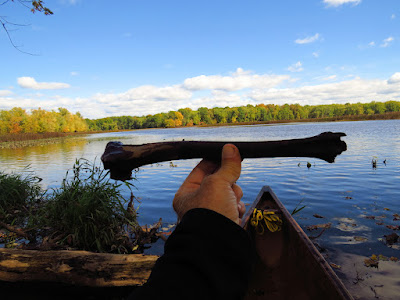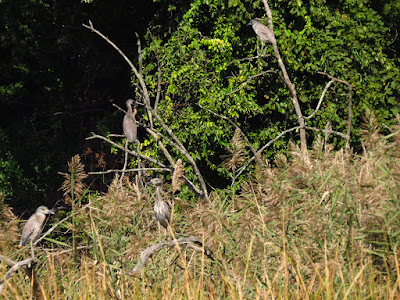I reread my favorite books about nature, exploring and deep thoughts about about those two topics quite often. Those good reads are not much different than my frequent canoe trips; no matter how many times I've been there, I always find something different, it's always a new experience. I'm currently rereading, "Disappearance: A Map" by Sheila Nickerson. As a Juneau based State of Alaska employee, one of her colleagues disappeared during a private airplane trip between Yakatut and Anchorage. More than a few people have disappeared in that enormous area of glaciers, water and forests. The book is about more than that, but that is her leaping off point.
My trip today has nothing to do with disappearing, at least in a physical sense. But Nickerson's book is some of the motivation. That's how things work.
I put in at the Rocky Hill Ferry. Last time I was here, the river was raging and I did not bother to unload the canoe. Today, the river is at a normal gauge level of 6 feet or so. It was 4 feet higher last week, and when you look at the photos, imagine what it looked like in July when it was 14 feet higher. I head upstream against a moderate 2:1 current and a light headwind. It is warming up to something around 50F, and it is more than sunny enough.
Within a hundred yards, I enter a very large bend in the river. I follow the river-right bank, which is usually too weedy to mess with in warmer weather. I find a text book example of a beaver bank burrow about 5 minutes out. The bank burrow changes the chapter. From now on, I am in wild land, at least until something man-made drags me back. Not much farther on, I find a sailboat wreck, the hull filled with dirt and a variety of shrubs and saplings growing from it. Someone has been here, but they are gone.
I decide I should name this section of the river. It is personal geography - naming places with your own names. It make sense for when I want to refer to a specific place in the future. My personal geography names also are more descriptive. Should this section be the Shipwreck Reach, or should it be the One Hour Bends? While there aren't any actual shipwrecks, for some reason, this part of the river has more than a half dozen boat wrecks, with 3 or 4 downstream of my put-in and 3 upstream. This might be because there are only a handful of houses that can see this 5 or 6 miles of river. It is low flood plain and the only dry land is farm fields that flood at least once a year. So, no one is around to complain about the abandoned boats. It is the only place on the river where I have seen this phenomena. As to the One Hour Bends - there are 3 big bends above the put-in, and they are big. If it was foggy, say a 200 yard visibility, one would never know that they were paddling a big long curve.
I paddle upstream for two hours. Like a clock, I complete two bends; one hour turning left, one hour turning right. I see a distant soaring Hawk, a partially submerged upside down motorboat, one Great Blue Heron, and a Duck that speeds away so fast that I cannot identify it. The second bend has a nice crop of willow saplings on the outside of the curve right at the water's edge for almost a third of a mile. Beaver have been feeding here, but not in any concentrated spot. The saplings are all just the right size so that they can be bit off and nibbled without effort. It's a bag of potato chips for beaver.
 |
| Willow saplings |
At two hours, I cross the river and follow the river-left bank back, keeping my eyes peeled for more bank burrows - I did not see any burrows or lodges near the willows. This side of the river also has a lot of willows, but they are full grown trees. I find a third boat wreck - an inboard motorboat lodged well into the river bank trees. But, no bank burrows.
As I cross the river back to my start point, a mature Bald Eagle flies past.
I decide that I have paddled the One Hour Bends section of the Shipwreck Reach of the Connecticut River. It rolls off the tongue.


































